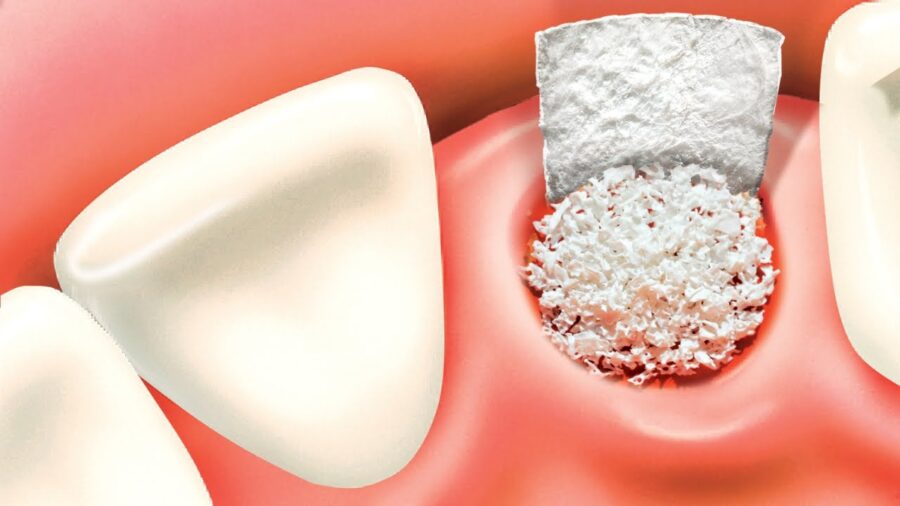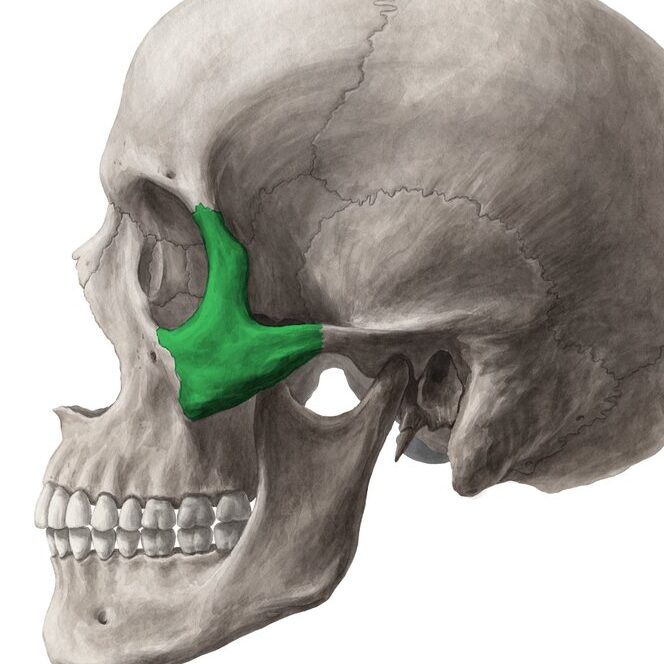The sound of dental equipment whirs rhythmically as you lean back in the dentist’s chair. There’s the residual fear of having a tooth extracted and also the curiosity of wondering what comes next. Most patients are unaware of the intriguing and frequently misinterpreted phenomenon known as the bone sequestrum, which exists beyond tooth extraction. Come along on this dental adventure with me as we solve the mystery of what happens beneath the surface as a tooth says its last goodbye. Let’s read about bone sequestrum after tooth extraction.
How does the Tooth Extraction process work?
An explanation of why tooth extraction is necessary
When a tooth is broken, decaying, or creating other dental problems, extraction becomes the best course of action. In a few situations, tooth extraction might be necessary:
Extreme Dental Decay
In cases where the tooth’s structural integrity is compromised by deep-seated decay, extraction might be the only practical way to stop the infection and further harm from occurring.
Progression of Periodontal Disease
Teeth might become loose if gum disease is not treated. In situations where there is significant damage to the supporting structures, extraction could be advised in order to preserve general oral health.
Wisdom teeth impact
Third molars, or wisdom teeth, frequently don’t have enough room to erupt properly. Wisdom teeth that are impacted may hurt, bulge, or even break other teeth, requiring extraction.

Treatment for Orthodontics
In order to make room for teeth and align them correctly, which ensures a harmonic bite, tooth extraction may be necessary in certain orthodontic instances.
Overcrowding
Too many teeth in one area might cause misalignment and make it harder to practice good dental care. In order to improve general dental health and alleviate overcrowding, tooth extraction may be recommended.
Broken bones or trauma
Broken teeth are a common consequence of trauma or accidents. It can be necessary to extract in order to reduce pain and avoid infection.
Step-by-step Extraction procedure | Bone Sequestrum
- To determine the state of the tooth and prepare it for extraction, the dentist performs a comprehensive examination that frequently includes X-rays.
- The dentist numbs the area surrounding the tooth with local anesthetic to facilitate a painless procedure.
- The dentist uses specialised instruments to carefully remove the tooth from its socket. To enlarge the socket, this may entail rocking the tooth back and forth.
- When the tooth is sufficiently loose, the dentist carefully extracts it from its socket using forceps. To make extraction easier, the tooth could occasionally need to be sectioned into smaller pieces.
- To provide the best possible healing, the extraction site is meticulously cleaned, and, if required, stitching may be used.
Common complications associated with Tooth Extraction
A dry socket happens when the blood clot that usually forms upon extraction dissolves or becomes dislodged too soon, revealing the bone beneath.
If adequate oral hygiene is not maintained after extraction or if the patient already had an infection prior to the treatment, infections may arise.
Seldom can adjacent nerves be damaged during the extraction process, which can result in numbness or tingling in the chin, tongue, or lower lip that might last a long time or, in the worst situations, never go away.
While some bleeding during extraction is typical, in some circumstances severe bleeding may occur, and immediate attention is required.
When a tooth is extracted, its roots could break, particularly if it is fragile or has curved roots.
What is a Bone Sequestrum?
When discussing dental and medical treatments, the phrase “bone sequestrum” refers to a fragment of dead or detached bone that has broken away from the surrounding living bone tissue. As far as dentistry is concerned, bone sequestration can happen following tooth extraction.

The body’s natural healing processes are responsible for this phenomenon, especially in cases where the bone is exposed to damage or infection or when dealing with more intricate extractions. The surrounding bone regenerates itself after a tooth is removed.
Sometimes a section of the bone loses its vitality and separates from the surrounding healthy bone because of things like infection, poor blood supply, or slow healing. We call this solitary fragment a bone sequestrum.
Bone Sequestrum differs from Post-Extraction Complications
In terms of origin and type, bone sequestrum is distinct from other post-extraction problems. In contrast to frequent problems that mostly affect soft tissues, including dry sockets, infections, or excessive bleeding, bone sequestration directly affects the structure of the bones.
For instance, a dry socket occurs when a blood clot dissolves or becomes dislodged at the extraction site, exposing the underlying bone and producing pain.
A bone sequestrum, on the other hand, is the separation of a section of the bone. Bone sequestration may show up later in the healing process, although other issues frequently show up early on.
Factors contributing to the development of Bone Sequestrum
Dental infections can impede the natural healing process, especially if they existed prior to the extraction. The development of a bone sequestrum may be facilitated by impaired blood flow to the bone.
Bone sequestration risk may rise with delayed or poor healing. A slower healing process may be caused by elements including poor dental hygiene, systemic health problems, or a failure to follow post-extraction care guidelines.
A bone sequestrum may separate due to injury caused by overuse of force during the extraction process or trauma to the surrounding bone.
Sufficient blood flow is essential for effective healing. Blood circulation problems, such as vascular abnormalities, can make it more likely for the bone to receive insufficient oxygen and nutrients, which increases the risk of a sequestrum.
Systemic diseases such as autoimmune illnesses or diabetes can affect the body’s capacity to mend itself, which can affect how bone sequestrum forms.
Acknowledging the Indications and Signs
Pain and distress
Following a tooth extraction, pain and discomfort are frequent and a normal part of the healing process. But it’s important to know when the discomfort becomes unbearable or unnatural. Pain that lasts or gets worse after the first few days of extraction may be an indication of bone sequestration.
Patients need to distinguish between pain that can be a sign of difficulties, like the existence of a bone sequestrum, and the normal discomfort that comes with the healing process. It’s imperative to speak with a dentist to identify the problem and the best course of action.
Inflammation and swelling
One of the common reactions to the trauma of tooth extraction is swelling and inflammation. But swelling that lasts longer than the first phases of recovery or gets worse may be cause for concern. Persistent swelling in the context of bone sequestrum may be a sign of a delayed healing process or the body’s reaction to the presence of a bone fragment that has come loose.
Accurate assessment and rapid intervention depend on monitoring changes in the amount and consistency of swelling and promptly reporting them to the dentist.

Continuous bleeding
While some bleeding is normal in the moments following tooth extraction, severe or repeated bleeding may need medical treatment. Prolonged bleeding may indicate problems, such as the existence of a bone sequestrum that is impeding the extraction site’s ability to close properly.
Patients should adhere to the post-extraction care guidelines, which include refraining from activities that could worsen the bleeding, and contact their dentist as soon as the bleeding doesn’t stop within the anticipated time period.
Off-putting taste or smell
A bad taste or smell coming from the extraction site could mean that healing isn’t going well or that there is an infection. A bad taste or odor may result from the detached bone fragment in cases of bone sequestrum serving as a breeding ground for germs.
Patients should notify their dentists of any persistently unpleasant taste or odor and be alert to changes in their oral senses. This may warrant additional research to guarantee appropriate healing and rule out complications such as sequestration or infection.
Dr. Chirag Chamria’s Insights on Bone Sequestrum
Overview of Dr. Chamria’s experience and expertise
Specializing in whole mouth rehabilitation, orthognathic surgery, cosmetic dentistry, zygomatic implants, and oral cancer treatment, Dr. Chirag Chamria is a Certified Oral and Maxillofacial Surgeon. It is a privilege for Royal Health Care Pvt. Ltd. to have Dr. Chirag as its director and maxillofacial surgeon. He is a dental surgeon and one of Mumbai’s best dentists; he practices oncology, facial aesthetics, and cosmetic dentistry as an attending physician at Royal Dental Clinics.

Common cases of Bone Sequestrum observed in his practice
- Cases where patients get infections after being extracted, which prevents the bone sequestrum from forming and delays healing.
- Situationsons in which several teeth are extracted, or in which there are multiple impacted teeth, this increases the chance of bone sequestrum development.
- Aspects of Systemic Health: Individuals with underlying medical issues, such as diabetes, may have an effect on how well the body heals itself and increase the risk of bone sequestrum.
- Circumstances in which patients’ healing is delayed, potentially as a result of their disregard for the post-extraction care guidelines or other factors that influence their healing.
Diagnosis and Treatment Options for Bone Sequestrum
How bone sequestrum is diagnosed by Dentists?
Clinical Assessment
A comprehensive clinical evaluation of the extraction site is performed by dentists, who look for indications of the potential presence of a bone sequestrum, such as recurring discomfort, swelling, or strange healing patterns.
Imaging Research
To view the interior structures and locate any broken bone pieces, X-rays or other imaging tests might be used. This makes it possible to evaluate the size and location of the bone sequestrum in greater detail.
The patient’s history and symptoms
A thorough history of the extraction and the post-operative period, in addition to patient-reported symptoms like ongoing discomfort or an off-putting taste, are important sources of information for the diagnostic process.
Non-surgical and surgical treatment options
Non-surgical Options
Antibiotics may be recommended to control and eradicate an infection if it is linked to the bone sequestrum. In order to maintain good oral hygiene and reduce their risk of infection, patients may be recommended to use topical antiseptic mouth rinses. Non-surgical treatments concentrate on using over-the-counter painkillers and other supportive measures to manage symptoms like discomfort.
Surgical Options
Removing the detached bone fragment surgically may be advised if the bone sequestrum is providing ongoing problems or impeding appropriate healing. In order to promote the best possible healing, surgical debridement entails clearing the extraction site of any diseased or non-vital tissue. In more complicated cases, flap surgery could be used to promote complete healing by accessing and addressing deeper structures surrounding the extraction site.
Conclusion
With our understanding of bone sequestrum, let’s wrap up this dental adventure by keeping in mind that achieving ideal oral health requires cooperation between the patient and the dentist. Under the knowledgeable direction of Dr. Chirag Chamria, patients can be reassured that bone sequestrum is a normal aspect of the body’s complex healing process. Therefore, have no fear, my dear patient; comprehension opens the door to a more radiant and healthy smile.






